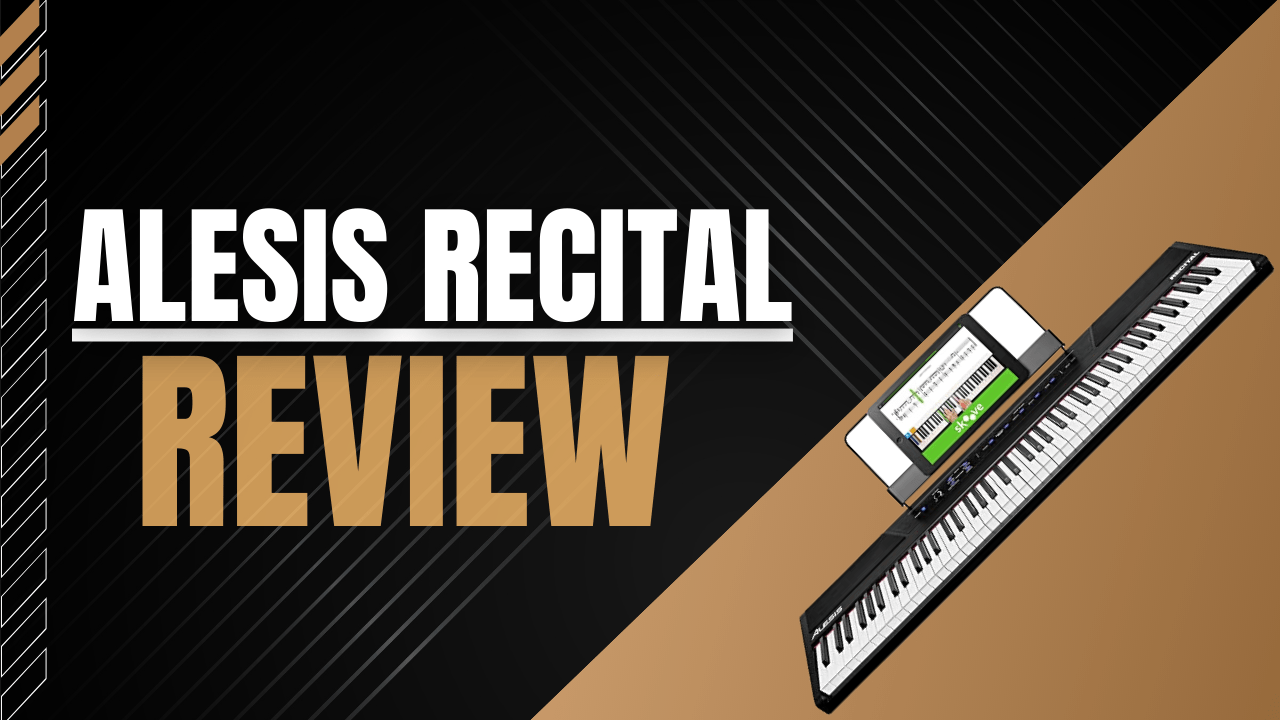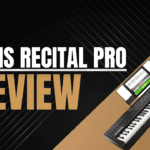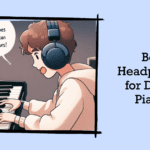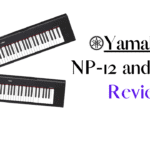As a pianist with over 20 years of experience playing and teaching piano, I’m always on the lookout for quality digital pianos that can provide an authentic playing experience without breaking the bank. The Alesis Recital is one such model that caught my eye – it’s affordably priced under $300, yet offers features that mimic an acoustic piano remarkably well for the cost.
I was able to get my hands on the Alesis Recital to test it out extensively over several weeks. In this review, I’ll provide my honest take as a pianist on how this digital piano stacks up in terms of sound quality, key action, features, and overall value. Read on for the full scoop!
Alesis Recital First Impressions
Straight out of the box, the Alesis Recital cuts a sleek profile with its slim, portable design. Weighing in at just 15.7 pounds, it’s lightweight enough to transport easily from room to room.
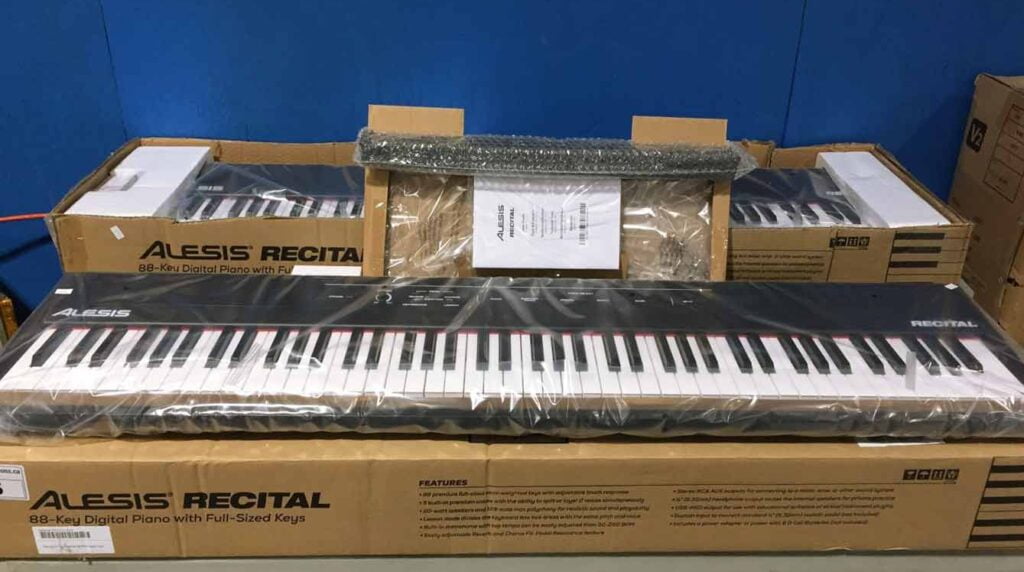
The minimalist aesthetic features clean lines and a white and woodgrain finish that give it an elegant, understated look. While made of plastic, the construction feels solidly built – this doesn’t have a cheap or flimsy feel to it.
Setting up the Recital is a breeze – simply unfold the keyboard stand, plug in the power cable, and turn it on. The full 88 keys with adjustable touch response also impressed me upon first try. While they don’t feel exactly like an acoustic piano, the semi-weighted keys respond well to nuanced playing dynamics.
Key Action
The Alesis Recital features 88 full-sized, semi-weighted hammer action keys with adjustable touch response. The graded hammer action is designed to recreate the feel of an acoustic piano, with keys that get progressively heavier from left to right.
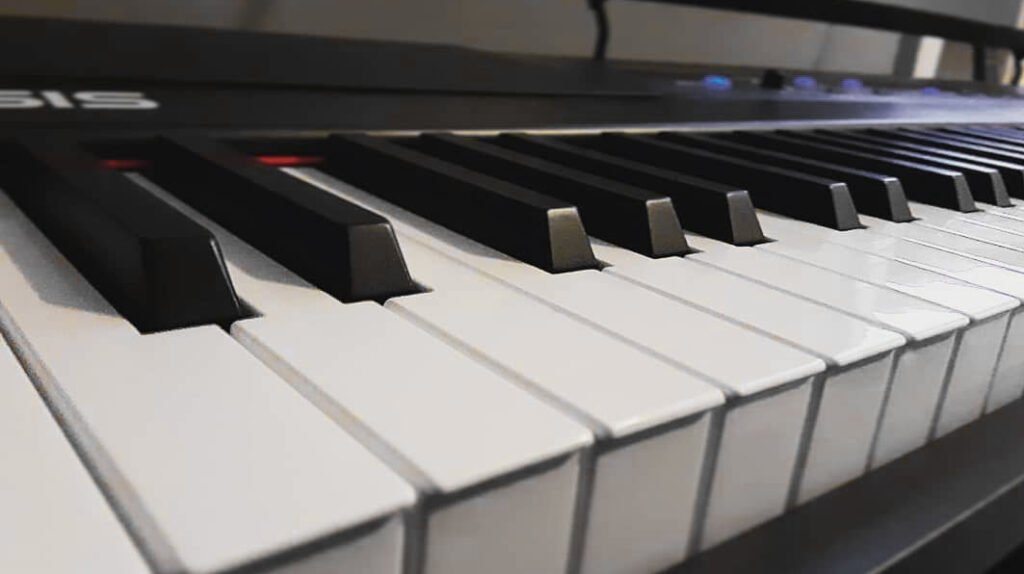
After extensive playing, I can confirm the keyboard action feels fantastic, especially considering the price. The keys have a satisfying weight and bounce back responsively when played. While not completely identical to an acoustic piano, the nuanced feel allows for practicing dynamics like pianissimo to fortissimo.
Touch response can also be adjusted to suit your playing style – Light, Normal, or Heavy. I found the Normal setting provided the most natural piano feel, but it’s nice having the option to customize.
The Alesis Recital provides a very realistic keybed for the money. The weighted keys go a long way in mimicking the touch and response of an acoustic piano on a budget.
Sound Quality
For a digital piano under $300, the Alesis Recital produces surprisingly rich, authentic piano sounds. It utilizes Alesis’ proprietary Sound Engine to recreate the complex tonal qualities of an acoustic grand piano.
Five built-in voices provide pleasing tonal variety:
- Acoustic Piano – warm and mellow, great as a main piano voice
- Electric Piano – crisp and bell-like, ideal for jazz or pop styles
- Organ – pipe organ tones, full and majestic
- Synth – spacey, ambient pads for new age or electronic music
- Bass – deep upright bass tones
The piano and electric piano voices are the highlight – they sound full, natural, and resonant through the built-in 20W speakers. From bright, staccato playing to sustained legato passages, the dynamics come through beautifully.
Some other digital pianos in this price range suffer from a flat, lifeless quality, but that’s not an issue here. The Alesis Recital produces a vibrant, authentic tone comparable to more expensive models.
Polyphony
Polyphony is a huge factor when buying a keyboard. It’s the maximum number of notes that can be played at once. This is great for pieces with multiple voices, like lush strings or jazz chords.
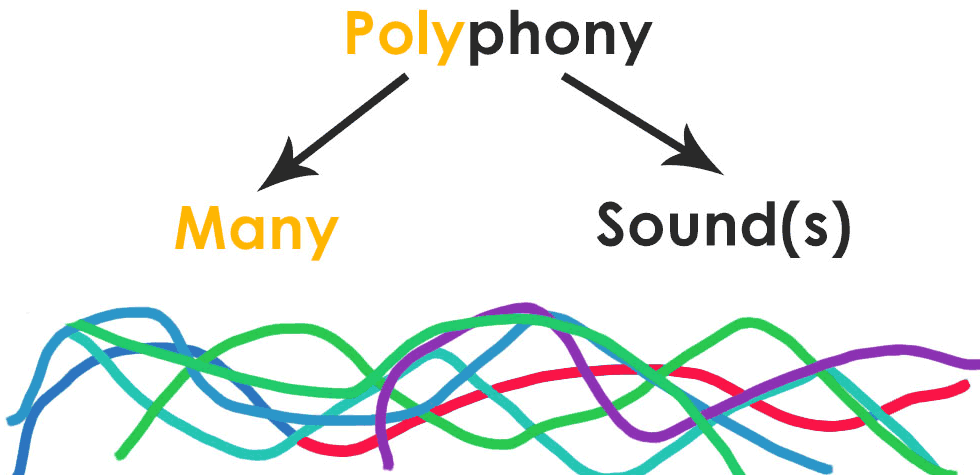
The Alesis Recital 88-key digital piano has an impressive 128 polyphony voices. It means you can play complex pieces without losing any sound. It also helps to avoid muting other notes. Few entry-level keyboards have this much polyphony. That makes it an excellent choice for pianists who need to watch their budget.
Features
For an entry-level digital piano, the Alesis Recital comes well-equipped with features to enhance the playing experience:
- Lesson Mode – This splits the keyboard into two identical 44-key pianos, allowing you to practice hands separately alongside a teacher or lesson plan. Very useful training feature.
- Split Mode – Splits the keyboard into two voices, so you can play bass in the left hand and piano in the right for example. Broadens your musical horizons.
- Two Track MIDI Recorder – Helps capture your musical ideas or record practice sessions for review.
- Reverb – Adds spaciousness and depth to the piano voices. Has room, hall, and plate reverb options.
- Chorus – Creates a rich, swirling effect similar to an ensemble of pianos playing together.
- Metronome – Can be customized with different time signatures and tempo to aid practicing.
While it doesn’t have an overwhelming amount of features, the Alesis Recital includes the essentials an aspiring pianist needs. The Lesson, Split, and Recorder functions are especially valuable for proper training.
Connectivity

The Alesis Recital has the following connectivity options:
- USB-MIDI output – Allows you to connect the Recital to a computer and use it as a MIDI controller with educational software or virtual instrument plugins.
- 1/4″ (6.35mm) sustain pedal input – For connecting a sustain pedal to more realistically replicate the feel of an acoustic piano (pedal not included).
- 1/4″ (6.35mm) stereo headphone output – Enables quiet private practice by muting the internal speakers when headphones are connected.
- Stereo RCA line outputs – For connecting the Recital to an external amplifier, speakers, mixer or recording interface. Having dedicated line outs is an advantage over just a headphone jack.
- Can be powered via the included power adapter or with 6 D cell batteries (not included) for portability.
However, the Alesis Recital is missing a couple connectivity features that some other digital pianos have:
- No Aux input to connect external audio sources like a smartphone to play along with backing tracks.
- No Bluetooth wireless connectivity.
The core connectivity options on the Alesis Recital like USB-MIDI, sustain pedal input, headphone output and stereo line outs make it a very capable digital piano at its price point, especially for beginners. The ability to operate on battery power is also a plus for portability.
Pros
- Realistic piano sound through 20W speakers
- Graded hammer action keys with adjustable touch response
- Useful Lesson, Split, and Recorder modes
- Sleek, portable design weighing just 11.5 pounds
- Affordable pricing under $300
Cons
- Limited to just 5 instrument voices
- Pedal included could be more robust
- No LCD display screen
Who It’s For
The Alesis Recital is an excellent starter digital piano for beginner players or students. It provides a great-feeling keyboard and authentic piano sound for an affordable price. The streamlined design and useful learning features also make it ideal for younger students.
Intermediate players can benefit from the Recital as a portable practice piano, though the lack of voices and connectivity may be limiting for more advanced musicians. For professional-level performance, you’d want to upgrade to a more full-featured digital piano.
The Verdict
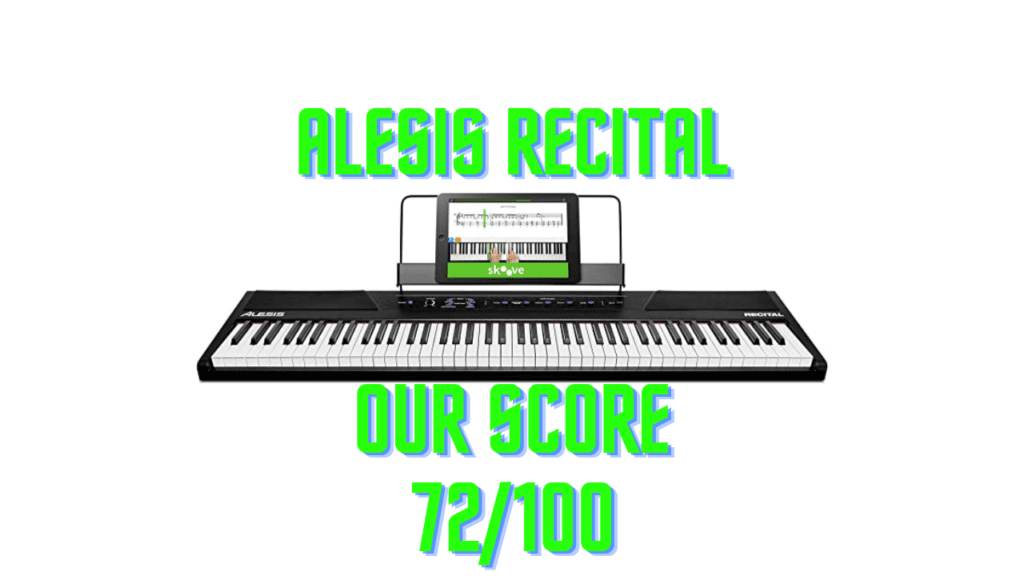
After thoroughly testing the Alesis Recital, I believe it deserves its reputation as one of the best beginner digital pianos available today. The combination of realistic key feel, great piano sound, and approachable price is hard to beat.
While it doesn’t have all the bells and whistles of a high-end model, the Recital nails the basics. For an aspiring pianist wanting to learn on an authentic instrument without breaking the bank, I don’t think you can do much better than the Alesis Recital.
It’s not a perfect digital piano, but in the sub-$300 price range, the Recital hits a genuine sweet spot between quality and affordability. If you’re a beginner looking to buy your first piano, I wouldn’t hesitate to recommend checking out the Alesis Recital.
Alternatives to Consider
The Alesis Recital is a great entry-level digital piano, but may not be right for everyone. Here are two alternatives worth considering before making a purchase in the same price range:
Yamaha P45
Yamaha is renowned for their acoustic pianos, so the P45 brings that expertise to an affordable digital piano. It offers Yamaha’s high-quality AWM stereo sampling for realistic piano tones through built-in speakers. The 88-graded hammer standard keys also feel great. At around $300, the Yamaha P45 is an excellent alternative to the Recital.
Casio CDP-S100
For those wanting more voices and connectivity, the Casio CDP-S100 packs in 700 tones, Bluetooth MIDI, and USB connectivity for under $300. The 88-scaled hammer action keys feel good, although some may prefer the Alesis’ graded hammer weighting. Still, the CDP-S100 is a versatile alternative.
The Bottom Line
The Alesis Recital nails the fundamentals for an entry-level digital piano very well. The authentic sound and feel provide budding pianists with a quality instrument to learn on for an affordable price. While it lacks some features of more advanced models, the Recital focuses on nailing the basics right.
For beginners looking to buy their first piano, the Alesis Recital is easy to recommend based on its combination of playability, sound, and price. After spending significant time with it hands-on, I can confidently say it’s one of the best options out there for getting started with digital piano under $300.

